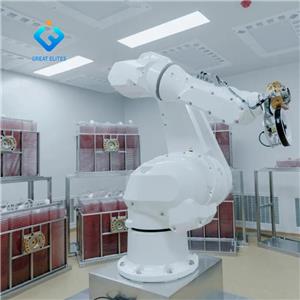What is the prospect of cell culture?
What is the prospect of cell culture?
In the pharmaceutical industry, cell culture has become an important part of antibody production. Cell culture technology has been used to produce antibodies against rotavirus, poliomyelitis, smallpox, hepatitis, rubella and chickenpox. Cell based influenza antibodies have also been approved for use in the United States and many European countries. What is the prospect of cell culture?
Market opportunities for cell culture: the demand for 3D cell culture is growing
3D cell culture due to various reasons, the demand for 2D cell culture is increasing. The 2D cell culture method includes culturing cells into 2D monolayers on a plane. Two dimensional adherent cell culture fundamentally limits the production of cells. Researchers have proposed 3D cell culture to solve these problems. These cultures have been proved to be effective in the study of some basic biological mechanisms, such as cell number monitoring, cell viability, cell proliferation and cell morphology. In addition, compared with 2D culture, 3D cell culture has higher stability and longer life span. The advantages of 3D cell culture have attracted many enterprises to invest in this field.
In the international environment, in May 2019, kiyatec Inc. (the United States) received a series 2 fund of US $3million to develop in vitro 3D culture technology to simulate and detect the response of cancer patients to drugs.
In May 2019, treefrog therapeutics (France) raised $8.6 million for C-stem, a 3D cell culture system used to mass produce stem cells with a shorter delivery cycle while maintaining genome integrity, in a round a financing.
In June, 2018, inphero Ag (Switzerland) raised $10million in its latest round of financing, and obtained additional financing from internal and external investors, bringing the total financing to $35million so far. Inphero is an innovative supplier of 3D cell-based drug discovery and efficacy testing platforms. It is expected that these efforts of investors and market participants will provide important growth opportunities for market participants in the next few years.
Challenges facing cell biology
1、 High cost input
Cell biology, the development and research of innovative drugs such as stem cells and gene therapy involve high research costs. Equipment, reagents and other products related to research must also be of high quality to provide accurate results. Therefore, various academic institutions and small companies with limited budgets cannot afford to conduct cell biology research. With the application of microcarriers in stem cell biology, this factor is also likely to become an obstacle to market growth. In addition, because microcarriers adhere to cells, cells need to be harvested, which further increases downstream processing costs. In turn, this may inhibit the growth of the cell culture market.
2、 Plastic waste treatment
Cell culture is a flexible research method. However, it relies heavily on plastic consumables. This has caused the problem of producing a large amount of plastic waste every year. This has a negative impact on the environment. Therefore, in the process of enterprise development, more and more attention is paid to reducing costs, saving process development time and low capital investment. Biopharmaceutical companies widely use disposable bioprocess systems and consumables. They also reduce utility and water costs in cleaning and disinfection, as well as batch conversion times. However, there are still serious problems related to the treatment of solid waste by this alternative technology. Most disposable bioprocessing systems are made of a variety of materials or layers, including polyethylene (PE), polypropylene (PP), vinyl alcohol, or nylon. For such products, if recycled, they require a lot of effort to separate components into homogeneous components. Therefore, most disposable systems and their components are not suitable for recycling.
However, the impact of this challenge will be reduced in the future, as research and innovation have increased significantly to create environmentally friendly bioprocessing systems or new materials for laboratory consumables.
Opportunities faced by laboratory consumables market
What is the prospect of cell culture? What are the opportunities and challenges of cell culture consumables? The cell culture market is mainly divided into two categories: equipment and consumables. The market of cell culture equipment is further subdivided into supporting equipment, bioreactor and storage equipment. The market of cell culture consumables is mainly divided into serum, culture medium and reagent, containers and bioreactor accessories. At the end of 2020 and 2021, the consumables sector will occupy a huge market share. The large share and high growth rate of consumables can be attributed to the repeated purchase of consumables and the increase of cell research funds.
In the past year, North America was the main regional market of cell culture market.
The international market of cell culture is mainly distributed in North America, Europe, Asia Pacific, Latin America, the Middle East and Africa. In 2020, North America accounted for 39.6% of the total cell culture market.




